-
Posts
101 -
Joined
-
Last visited
Content Type
Profiles
Forums
Blogs
Gallery
Events
Store
Posts posted by SemperParatus
-
-
Fantastic, thanks guys.
0 -
Hey folks,
Just would like to confirm some information. Connor Rumble, a policeman in Toronto, joined the Canadian Field Artillery in 1916 as an enlisted man. Rumble had previously served 12 years in the Royal Garrison Artillery prior to emigrating to Canada. While in England with the CFA in 1917, he was granted an "imperial commission" and transferred to the Royal Garrison Artillery.
Am i correct to interpret this MIC as Rumble having served in England only (due to the award of the BWM but nothing else, and Theatre of War left blank)?
Also what does "E.F.G. Ret'd 30.10.26" mean?
Are any other markings on the card of any important significance?
Cheers
0 -
I have found some other Edoardo Barberis'
Birth Certificate:
Edoardo Francesco Antonio BARBERIS, born 7 July 1889 in Savona, Italy.
Military Casualties of WW1 Albo Oro:

Edoardo BARBERIS, born 11 September 1896 at Cavaglia, Vercelli, Italy. Died of Wounds on 28 July 1916
Perhaps it is not as rare of a name as we first thought.
0 -
Yes good point, I'd say you're correct here.
I guess I've come used to seeing the 1939-45 Star and Defence Medal through a Canadian lens (the DM having a shorter qualifying period I believe) . For example many of the POWs captured at Dieppe qualified for the Defence Medal and the 1939-45 Star. I believe the same is true for other raids/operations earlier in the war.
0 -
4 hours ago, Tony said:
The first group is to William Anscombe from Maidstone
As for the 2nd group, not knowing the name on the LSGC makes it a little difficult but as the 39-45 Star is there it's possible he was evacuated from Norway or France in 1940 and spent the rest of the war in the British Isles.
Or in captivity...
0 -
An interesting WW1 naval group. Don't see too many where I am.
The WW2 group also nice points to service in the early ground campaigns (absence of other campaign stars) to a regular army soldier.
0 -
Thanks for the list!
0 -
Would the Balkan theater not be Salonika? Or is that "Asia" on the cards? Not well versed in the MICs
0 -
Here is a template for you to mail an information request (which I have used successfully - in my case they pointed me to the locale comune (municipality) whose archive held the information I needed):
*****************
Mailing Address:
Centro Documentale di Caserta
Viale Douhet 1
81100 CASERTA CE
ITALY
*****************A sample template in Italian for a full request should be :
Centro Documentale di (ADD CITY NAME)
Esercito Italiano
(ADDRESS OF THE DOCUMENTATION CENTER)Egregi signori,
il sottoscritto (YOUR NAME), residente in (YOUR ADDRESS), nella qualità di discendente diretto, richiede il rilascio di copia (dello stato di servizio FOR OFFICERS, OR del foglio matricolare FOR OTHER RANKS, CHOSE THE PROPER ONE) di (NAME OF THE RELATIVE), nato il (BIRTH DATE) a (NAME OF THE BIRTH TOWN) provincia di (NAME OF THE DISTRICT), che ha prestato servizio nel (NAME OF THE UNIT) durante la (NAME OF CONFLICT ie Primera Guerra Mondiale OR Seconda Guerra Mondiale).Cordiali Saluti
(YOUR NAME, ADDRESS AND SIGNATURE)************
Translation in english :
Dear sirs,
the requestant (YOUR NAME), living in (YOUR ADDRESS), as a direct relative, requests a copy of (the "stato di servizio" FOR OFFICERS, OR the "foglio matricolare" FOR OTHER RANKS, CHOSE THE PEOPER ONE) " of (NAME OF THE RELATIVE). born on (BIRTH DATE) in (NAME OF THE BIRTH TOWN) district of (NAME OF THE DISTRICT), who served in the (NAME OF THE UNIT) during (NAME OF CONFLICT ie. World War 1 or World War 2).INCLUDE YOUR EMAIL ADDRESS with your return address in your letter!
0 -
11 hours ago, Peter Mc said:
I first came across this medal being offered for sale in 1992. Despite extensive searches, I was unable to identify 'C.M. Wood' as ever being associated with any of the Irish Police forces, clerical judiciary or office staff. The RCMP Museum was unable to help even with a full name (this was in the 90's so new archives may be available now).
Peter, thanks for your input on this, I was hoping you would make an appearance in this thread as I know you are an authority on the topic.
As for RCMP files held in the archives, here is what Library and Archives Canada has to say on the topic:
QuoteThe Records
Records of the North West Mounted Police and Royal Canadian Mounted Police are in the custody of Library and Archives Canada, Record Group 18 (RG 18). The records include the surviving personnel records for NWMP members who served between 1873 and 1904. Search this database.
After 1904, only a sample of historically significant personnel records was retained, some of which are held by Library and Archives Canada. There are also files for members of the Dominion Police.
The personnel files in this database were digitized from the microfiche in RG 18, volumes 10037-10047, and RG 18 1997-98/386/box 33.
References to the surviving personnel files for the RNWMP, 1904 - 1920, can be searched using the Archives Advanced Search database using the following search strategy. Those files are not digitized.
- Archival ref. number: 18
- Any Keyword: surname
Note that some references indicate an initial rather than a full given name. The references for personnel records are identified as Series G. If the reference includes a microfilm reel number, it indicates that the file is available on microfilm and may be borrowed. If no reel number is included, the file can only be consulted onsite.
References to other documents relating to some NWMP members can be found in records of the Department of the Interior (RG 15). In the above database, enter RG 15 in the Archival Ref. Number box and the name in the Any Keyword box.
Record Group 18 includes other records relating to the Force, such as daily journals for the different Divisions and Detachments. There are also records relating to recruitment, enlistment, medical examinations, nominal rolls, discharges and investigations into charges against members.
Service files for those who joined the RCMP after 1920 remain in the custody of the RCMP. Requests for service information can be made directly to the RCMP under the provisions of the Access to Information Act and the Privacy Act.
So no record found for CM Wood in the archives does not necessarily mean Cpl CM Wood did not exist.
As for his purported Regimental Number 1788, it was in use from 1885 to 1887 by a James Mason who died of medical complications.
I have come across a further 10 'funnies'; all Visits 1911, some engraved to the MPSC, Gdn Hrs, Stoke on Trent Police, others unnamed but with named military medals. I have a feeling some of these men may have provided services in the St Johns Ambulance at the time, but this is only a speculation. The RIC did have a Colonial Policing training school and it is possible that men were present there, but usually these would have been of commissioned or NCO ranks. Again, I cannot place any of my '11 funnies' as positively being in Ireland at that time.
My "hunch" when I purchased this medal was that the man was on some sort of exchange in a training capacity. The two agencies being similar in nature. A Corporal in the RNWMP was a NCO rank after all.
0 -
Glad to hear about the credible sources, thanks Peter!
0 -
Not yet, I don't currently have access and was hoping someone who does may help me in that regard.
Cheers
0 -
I'm happy to help. I've done a lot of research from Canada on my Italian great grandfather and grandfather who fought in WW1 and WW2 respectively as well as their brothers, with barely being able to speak the language. It's taken me years but I more or less have their entire service history. I'm at work right now but will be happy to provide you with wh8ch archives to contact in Italy for help on this.
As for the 7th Infantry... The Italian army had compulsory military service, and to help forge a national identity (modern Italy was confederated in the 1860s) typically filled line regiments with men from two different regions, gave the brigade a name of a region and then headquartered it an a different region from both it's name and from where the men were from. For example my great-grandfather from Molise was in the Parma Brigade and stationed in Genoa. The powers that be thought that would help their countrymen stop thinking as regional peoples (Calabrian, Genovese, etc) and start thinking as Italians.
(In my personal opinion, units with regional or local identities have a higher esprit de corps and perhaps this explained some of Italys poor reputation on the battlefield... But I digress)
Due to the above reasons I found it very difficult to find out where my relatives served but I eventually accomplished it, so there's hope for you yet.
0 -
Hey Gents,
A few months back I acquired a 1911 Visit to Ireland Medal named to "1788 Cpl. C.M. Wood R.N.W.M.P. CANADA". From what I can tell it was first sold by DNW Auctions in 2001 and then from Tanya Ursual Antiques.
I find it very unusual and perhaps unique that a 1911 Visit to Ireland Medal was named to a Royal North West Mounted Police corporal - The RNWMP is the precursor to the Royal Canadian Mounted Police of today. The medals were issued unnamed and recipients typically had them named privately. The naming on this medal is consistent with others of the period. There are also contact marks suggesting it may have been mounted with other medals.
Taken from the Royal Irish Constabulary forum:
Based on Royal Mint records (MINT 20/468) the actual distribution of the medals was as follows:Royal Irish Constabulary - 1022RIC Office Staff - 24Dublin Metropolitan Police - 1314DMP Office Staff - 4St John Ambulance Brigade - 92Kingstown Harbour Police - 11Phoenix Park and St Stephens Green Police - 10TOTAL - 2477Unfortunately CM Wood does not show up in Library and Archives Canada’s NWMP Personnel Files 1873-1904 collection so I presume he would have joined after 1904. There is no record I could find in their spotty collection of 1904-1920 RNWMP records. A few CM Woods show up in the CEF Personnel Files but none with the occupation of policeman (this was a theory due to the contact marks indicating other medals). Does anyone know of a medal register of the RCMP LS&GC medal?
I emailed the RCMP Historical Section four months ago and have yet to receive a reply.
A few questions for the forum:
- Is anyone aware of the RNWMP sending any personnel to Ireland?
- Did the RNWMP provide Consulate/Embassy security?
- Did the RNWMP send members on exchange or training with Irish police forces such as the Royal Irish Constabulary?
- Are there any lists of the 1911 RNWMP Coronation delegations?
- Does CM Wood show up in any Irish censuses or RIC/DMP files?
-
Is there anywhere else I can look for a service file for Cpl Wood?
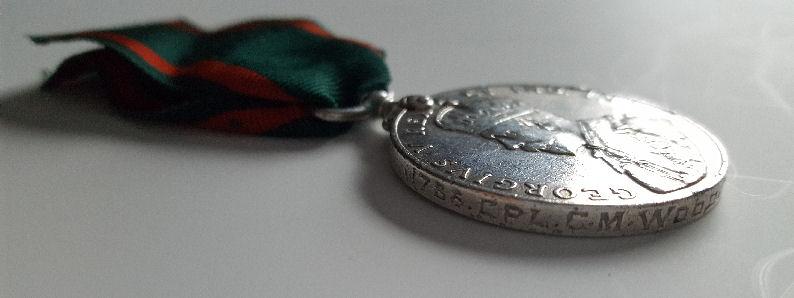

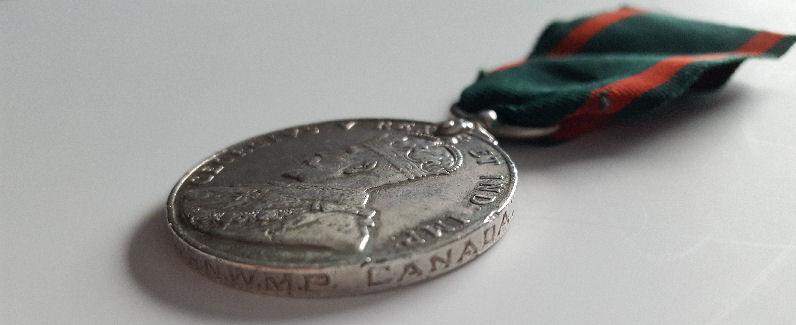

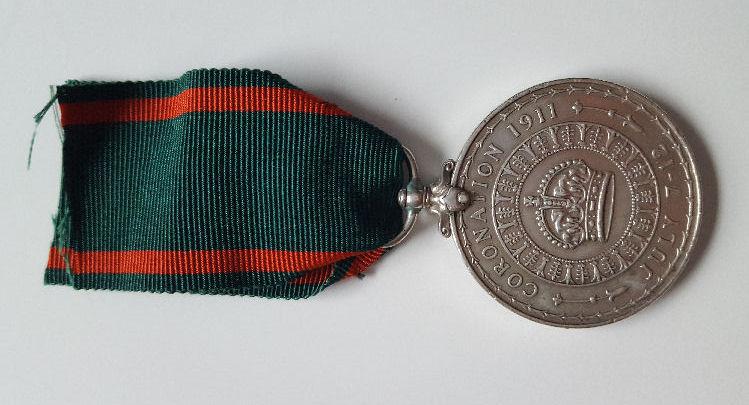
0 -
I imagine the same. Does anyone know of a medal roll or other way to see which organization he belonged to? Were students of the University of Edinburgh known for any specific civil defence/aid organization?
Does anyone have an orbat for RADFORCE or know of a way I could determine which unit Smelt was posted to in Aden?
0 -
On 28/05/2018 at 09:53, ostprussenmann_new said:
So I just called my great aunt again last night and brought up the weirdness of being 1879 and WWII. Come to find out after looking through her family records, he served prior to WWI and immigrated to the US in 1912 as things heated up in Europe and was in the US during WWI and actually was interned when they hit Ellis Island for a month or so. I suppose things make a little more sense now.
This doesn't exactly make sense. If he immigrated to the USA in 1912 then he would have been processed at Ellis Island in 1912, not 5 years later when the US entered the war in 1917. Furthermore he would not have been interned due to the war since he was from an Allied country. Remember, the Kingdom of Italy fought on the Allied side against the Austro-Hungarian Empire and to a lesser extent, the Germans. An American Expeditionary Force was sent to Italy in support and they took part in battles in 1918 together with their Italian allies.
0 -
Hey brother,
Not sure if this is your man because it doesnt entirely match up with the story you have so far provided, but it is interesting nonetheless.
I found this in a 1912 Bolletion Ufficiale (see post above).
Tenente Edoardo BARBERIS of La Morra (Cuneo province), of the 7° Reggimento Fanteria (7th Infantry Regiment) was awarded the Medaglia d'Argento al Valore Militare, the 2nd highest gallantry award, for an action in the Italo-Libyan War of 1911.
My Italian is sketchy at best but here is my rough translation of his citation:
While withdrawing under enemy fire, was a constant example of courage and fortitude. While wounded, attempted to salvage the equipment of the machine-gun detachment under his command, carrying out one of the pieces on his shoulders while being fired upon by Bedouins. During this glorious action under overwhelming fire, he ultimately laid down his life on the battlefield. Derna, 27 December 1911.
I was able to find this thanks to the Istituto del Nastro Azzurro http://decoratialvalormilitare.istitutonastroazzurro.org
0 -
-
Hey everyone,
I managed to pick up this interesting little group at a local antique market in Toronto this past weekend. It is a group to named to Wing Commander C.M.E.(sic) Smelt RAF (the Defence Medal is unnamed as issued, and the GSM with Radfan Clasp is named). It is paired with miniatures. This is a couple of firsts for me - my first British GSM, my first RAF medals, and my first medals to an officer. Officers, thankfully, are much easier to research.
I'd be happy to learn how he earned his Defence Medal and of more details related to his service during the Radfan Campaign (role, unit, location, etc).
Here are some photos (click to enlarge):
What I have so far:
Charles Michael Casterton Smelt was born around 1923. Son of Captain William Anthony Casterton Smelt O.B.E., a first war pilot of the Royal Naval Air Service, Royal Air Force and late Captain of the Essex Regiment. While Charles was growing up, his father William served in high level financial positions with the British North Borneo Company in British Borneo. During the Second World War, Charles attended medical school at the University of Edinburgh, and qualified for the Defence Medal. His father William, interned by the Japanese Occupation of British Borneo, survived and was awarded the Order of the British Empire for services during internment.
Charles Smelt graduated in 1946 with a Bachelor in Medicine (M.B.). Smelt was granted an emergency commission into the Royal Army Medical Corps, and on 26 May 1949, was made a Lieutenant on a short service commission. On 8 May 1950 Smelt was promoted Captain. Smelt retired on 28 July 1953, but remained on strength of the Regular Army Reserve of Officers. On 25 Sept 1954, Smelt was appointed to the Royal Air Force Medical Branch, and made a Flight Lieutenant. Smelt by now was also a Bachelor of Surgery (Ch.B.). Smelt was again promoted on 5 July 1955 to Squadron Leader. Seven years later, Smelt, now alson a Doctor of Public Health (D.P.H.) was promoted to Wing Commander on 5 July 1962. In 1964, Smelt served in the Radfan Campaign and the beginning of the Aden Emergency.Upon leaving the military in the late 70's, Smelt emigrated to Ontario, Canada, where he became a staff doctor in the Emergency Department of the Cornwall General Hospital. Smelt also worked as a Civilian Medical Officer in the Canadian Forces and as a physician for a company named Modern Industries. Smelt died in 1999.
From to the London Gazette:
Appointments to Short Service Commissions. R.A.M.C. From Emerg. Commn. to be Lts: C.M.C. Smelt, M.B. 26 May 1949. - L.G. 1949.06.09 Extract from the RAMC Journal.
Royal Army Medical Corps. Promotions. To be Capts. (Short Serv. Commns.): Lt. CMC Smelt M.B. 8 May 1950. - L.G. Extract from the RAMC Journal.
Royal Army Medical Corps. Short Service Commission. Capt. CMC SMELT, M.B (402282), retires with a gratuity, 28th July 1953. - L.G.4114 1953.07.28
Royal Army Medical Corps. Regular Army Reserve of Officers. Capt. CMC SMELT, M.B. (402282), ceases to belong to Reg. Army Res. of Offrs., 25th Sept 1954, on appt. to RAF (Medical Branch). - L.G. 696 1955.02.04
Royal Air Force. Medical Branch. Notification amended. 14th Dec 194 (p. 7063, col 2) concerning Charles Michael Casterton SMELT, M.B., Ch. B. (503951) for (Seniority 1st May 1948) read (seniority 5th Apr 1948). - L.G. 1533 1955.03.15
Royal Air Force. Medical Branch. Promotion. Flight Lieutenant to Squadron Leader. CMC SMELT, M.B., Ch.B. (503951). 5th July 1955. - L.G. 4114 1955.07.26
Royal Air Force. Medical Branch. Appointment to commission (Permanent). As Squadron Leader: - Charles Michael Casteron SMELT, M.B, Ch. B. (503951) 5th Apr 1957. - L.G. 3170 1957.05.28
Royal Air Force. Medical Branch. Promotion. Squadron Leader to Wing Commander. CMC SMELT, M.B., Ch.B. (503951). 5th July 1962. - L.G. 5478 1962.07.10
Royal Air Force. Medical Branch. The seniority of Wing Commander C.M.C. SMELT, M.B, Ch.B., D.P.H. (503951), is adjusted to 1st Apr 1962. - L.G. 8809 1962.11.13
And the below information is from the "Deaths" section of the Canadian Medical Association Journal dated 22 February 2000:
Smelt, Charles M., Cornwall, Ont.; University of Edinburgh (Scotland), 1946; DPH; Royal Air Force; former staff, Emergency Department, Cornwall General Hospital; civilian medical officer, Canadian Forces; physician, Modern Industries. Died Sept. 23, 1999, aged 76. His obituary, quoting an earlier interview, explained his reasons for moving to Canada: "After retiring from the air force at age 55, I was facing a life of genteel poverty and I thought, 'To heck with that.'"
0 -
When keeping in mind that the George Cross honour was created in 1940, it makes perfect sense for it (and the Defence Medal) to be shinier then the First World War pair. The WW1 miniature pair is not only 20 years older but may have been worn more frequently by the young veteran who may have had a more active social life then when he was older. We can only guess how long the recipient lived after receiving the GC and Defence Medal which may also explain the lack of wear.
0 -
On 3/30/2018 at 19:55, johnnymac said:
I find it interesting that you think Naval pilots and their crews would turn down a clasps that said "Aviation". That Sub Chaser crews would not want clasps like: Mine Sweeper, Mine Layers, Patrol or even the clasp Sub Chaser clasp itself. On the other hand these very few Marines who served in these war countries were entitled to the clasp Overseas. Later some may have wanted the Army country clasp of the country in which they served. But In 1920 when the medals were being ordered there was no (Approved SevNav 5 Oct 1940). So they would not be added into that number. AND, they were under Naval, not Army Command.
Not sure how you got that from what I said, I was merely quoting a contemporary book on medals.
Thanks for the additional information though.
0 -
Here is my first US Victory Medal, which I recently won at auction. I wanted one from the Italian Front as it is a particular area of interest for me (unfortunately I also bid on a Vittorio-Veneto/Defensive Sector medal but didn't win).

My thanks to previous to johnnymac for the below posts showing who would be entitled to the Italy clasp.
On 09/01/2011 at 07:28, johnnymac said:From the book "In Italy with the 332nd Inf."
1. HQ, 331st Field Hospital and machine Gun Co.
2. Trench Mortars, Supply officer
3. Our"Machine Gun men
4. 4000 men washing in ditch, 200 officers washing in river
5. "Our" Machine Gun, One pounders (small artillery)and Trench Mortars.
To support the Machine Gun Companies., Mortars, Artillery and Infantry you need "Ammo trains for each" that is why we get back to what they wrote in their book "4000 men washing in a ditch"
(not shown in these grouping, but a "Company Band" is also mentioned".
From the Book "Doughboys in Italy
6. Medical and supply units, 30 American ambulance sections, a Base hospital and 54 American pilots (+ crew) on a bombing raid Vittorio Veneto
Wiki - American bomber pilots Vittorio Veneto
The old break down for the Army was: A company had 100 men and 12 companies to regiment or 1,200 men that was not counting support units (we can not believe no one else was at the battle). The 332nd Infantry needed, food, ammo, everyday supplies, HQ, MP's, medical aid and supplies, field phones and list goes on. It would be hard to believe they got off the ship and said "we are here". Just think, possible 99.9% or more did not speak Italian, we know this as they did not seek only men that spoke Italian.
Jim
On 12/01/2011 at 07:59, johnnymac said:I do not agree with your statement (4,800 personnel being entitled to the Italy service clasp would have to be revised downward as well)and here's why.
The "Italy" clasp: There were 500 Air Service pilots training in Italy just before the battle of Vittorio Veneto. They would have had crew members (machine gunners), ground crews and mechanics' to service the new type bomber, they to would need training. And lets not forget supply and support units for this group of Air Service men. To me that would account for about maybe 1,200-1,500 men in that group in Italy. The Navy also sent pilots for training. There were U.S. Subchaser bases in Italy. As we know in 1940 the Navy Dept. allowed the Naval personnel to be awarded the Army's clasp for service in Italy. To me all that would cut into the number4,800.
If the 332nd Inf. in Italy, only had 1,200 are we to believeno officers, support units or bomber crews were any where near the battle, ofcourse not. I have read somewhere that others believe that the number should bearound 2,500 Vittorio Veneto medals.
As for the Navy/Marine Corps, the regulations for those entitled are:
"Italy. - Personnel of the Navy and Marine Corps who sailed from the United States prior to 11 November 1918, regardless of the date of arrival in that country, or the fact that the returned to the United States without disembarking, are eligible for the Service Clasp of that country. (Approved SevNav 5 October 1940)"
Source: Decorations, Medals Ribbons, Badges of the United States Navy Marine Corps and Coast Guard (1948).
Does any one have a list of which ships and/or Marine Corps units would be entitled?
.
0 -
But why a KGV DCM? And why a Rosette? Perhaps a bar to the DCM? Pardon my ignorance..
0 -
I thought Hugh was kidding around then I actually looked at the medal..
 0
0



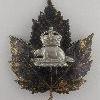
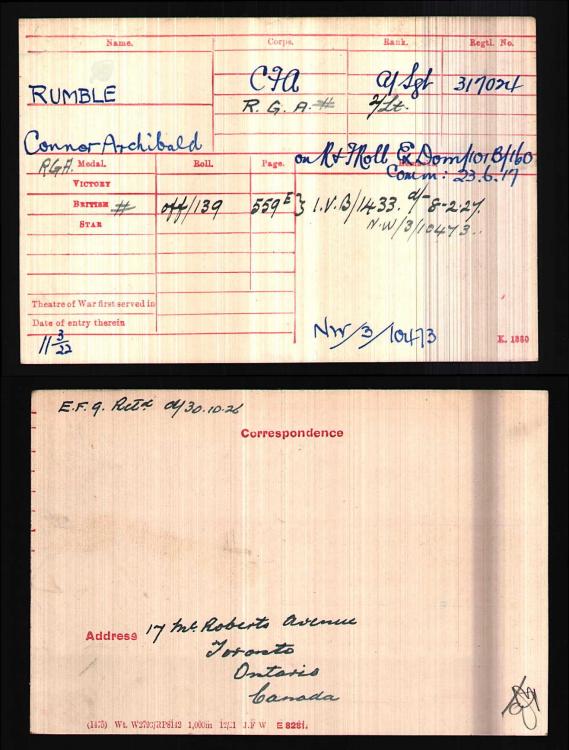
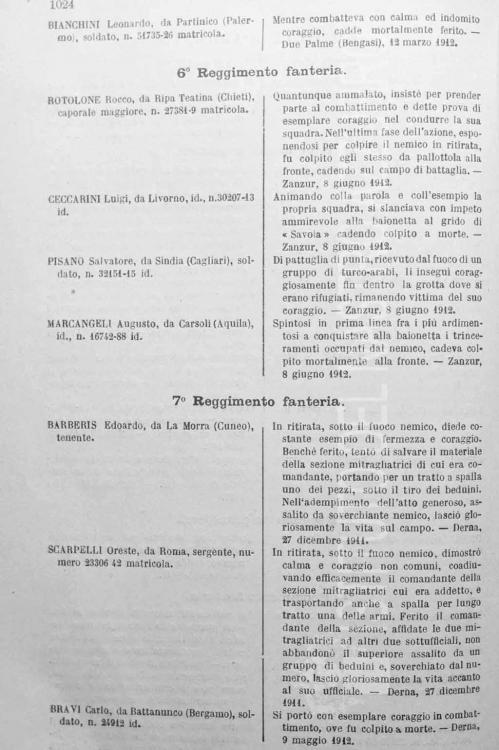
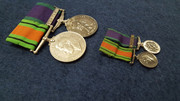
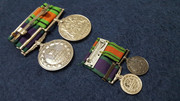
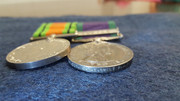
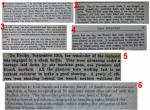
My Prisoner of War Collection
in Great Britain: Orders, Gallantry, Campaign Medals
Posted
Great story. Glad the medals are in good hands.